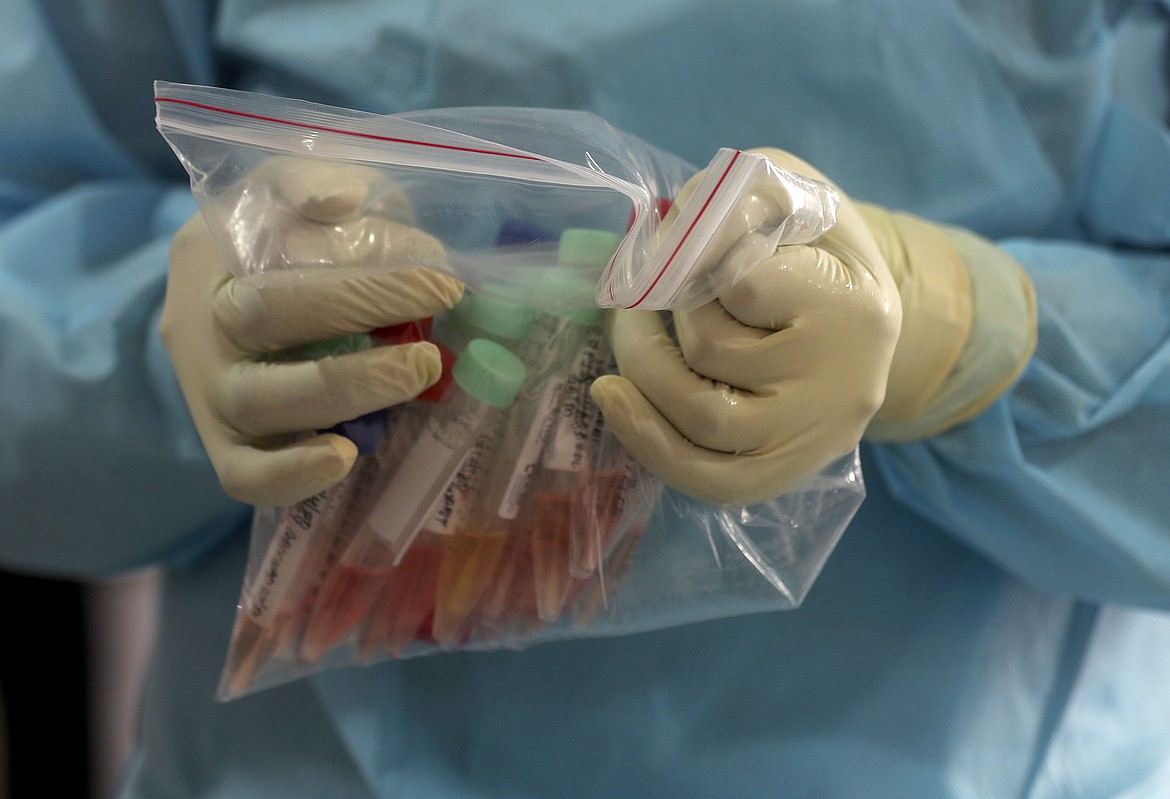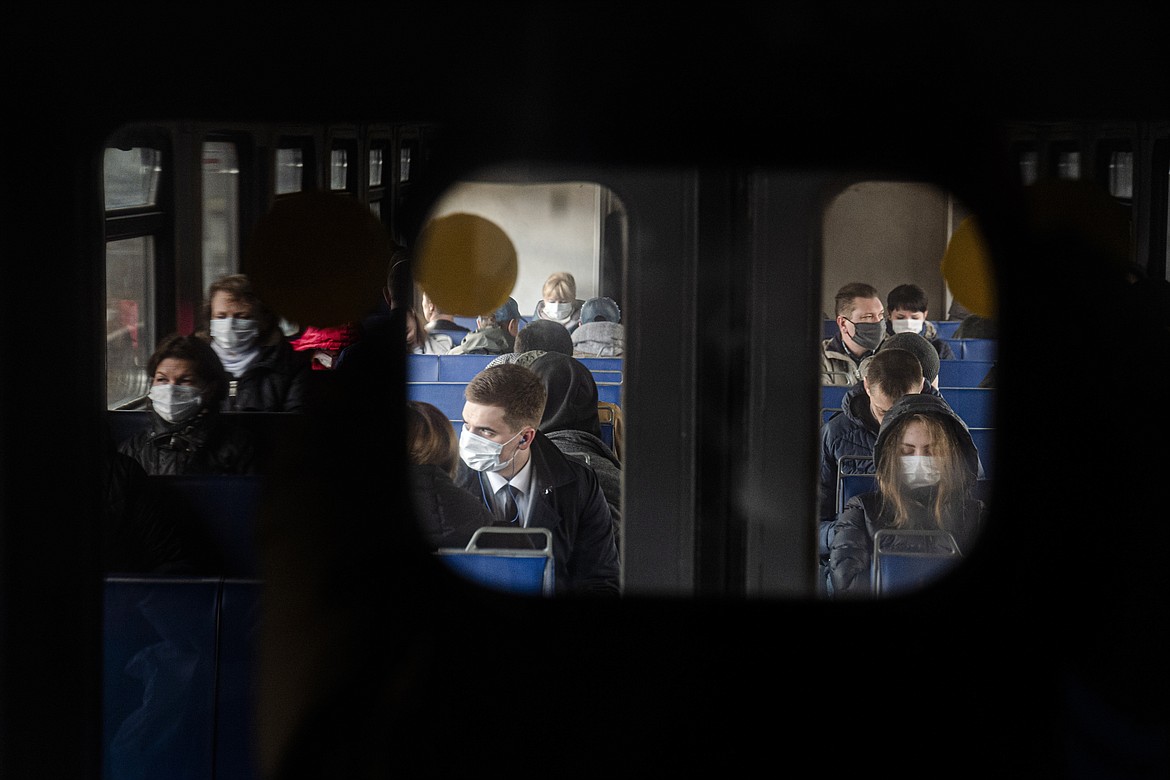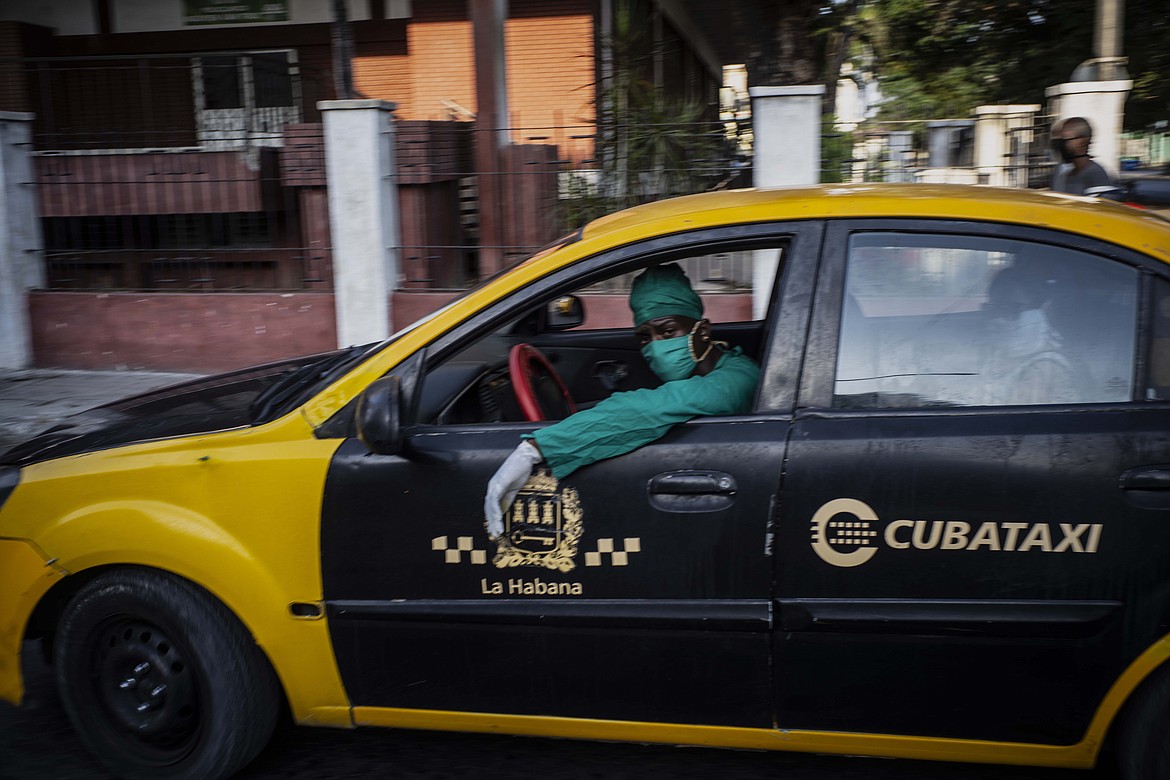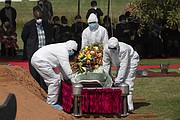US job losses mount as economic pain deepens worldwide
WASHINGTON (AP) — The ranks of Americans thrown out of work by the coronavirus ballooned Thursday to at least 22 million in an unprecedented collapse that has fueled widening protests and propelled President Donald Trump’s push to relax the nation’s social distancing guidelines.
Trump planned to announce new recommendations later in the day to allow states to reopen, despite warnings from business leaders and governors that more testing and protective gear are needed first.
The government said 5.2 million more people applied for unemployment benefits last week, bringing the four-week total to about 22 million out of a U.S. work force of roughly 159 million — easily the worst stretch of U.S. job losses on record. The losses amount to about 1 in 7 workers.
Some economists said the unemployment rate could reach 20% in April, the highest since the Great Depression of the 1930s.
While some leaders and citizens around the U.S. have called on government to reopen stores, factories and schools — especially in rural areas and other parts of the country that have not seen major outbreaks — health authorities and many politicians warned that returning to normal is a distant goal and that lifting restrictions too soon could allow the virus to come storming back.
The decision of when and how to ease up rests not with the White House but with state and local leaders, who imposed the mandatory lockdowns and other restrictions over the past month.
Mayor Bill de Blasio of hard-hit New York City, with more than one-third of the nation's coronavirus deaths, was among those urging caution.
“Everyone wants our economy to restart ... but there has to be a really clear understanding,” he said. "If we can’t provide the basics for our people, then you can kiss your recovery goodbye.”
The outbreak has infected more than 2 million people worldwide and killed approximately 140,000, according to a tally by Johns Hopkins University, though the true numbers are believed to be much higher. The death toll in the U.S. topped 31,000, with over 600,000 confirmed infections.
The World Health Organization’s European chief said optimism that the spread of the virus is declining in Italy, Spain and France has been tempered by the knowledge that it is rising or remaining at a high level in Britain, Russia and Turkey.
“The storm clouds of this pandemic still hang heavily over the European region,” Dr. Hans Kluge said.
The economic fallout, meanwhile, escalated around the world.
In France, Amazon suspended operations after a court ruled it wasn’t doing enough to protect its workers in the country. The online retailer has six warehouses in France. In Britain, a government survey found that a quarter of companies had suspended business. Cargo traffic at Europe's huge port of Rotterdam in the Netherlands sank more than 9% in the first quarter.
In the U.S., the government said home-building collapsed in March, with housing starts tumbling 22.3% from a month ago. A day earlier, the U.S. reported that American industrial output shriveled in March, registering its biggest decline since the nation demobilized in 1946 at the end of World War II. Retail sales fell by an unprecedented 8.7%, with April expected to be much worse.
Layoffs in the U.S. are spreading well beyond stores, restaurants and hotels, reaching white-collar professionals such as software programmers, legal assistants and other office workers.
Many European countries have likewise seen heavy job losses, but the social safety nets there are stronger. Government subsidy programs in places like Germany and France are keeping millions of people on payrolls instead of letting them go onto the unemployment rolls.
The International Monetary Fund said fallout from what it calls the “Great Lockdown” will be the most devastating since the Depression. That has made leaders all the more anxious to send people back to work and school and to rebuild devastated economies.
Italy’s hard-hit region of Lombardy is pushing to relaunch manufacturing on May 4, the day that the national lockdown is set to lift. Regional officials are considering ordering companies to stagger opening hours to avoid cramming public transportation.
But Italy’s deputy economic development minister, Stefan Buffagni, called the plan premature: “Going in a random order risks fueling confusion among citizens and businesses.”
Britain, with over 13,000 dead, was set Thursday to extend a nationwide lockdown for several more weeks.
In the U.S., governors are facing vocal, and in some cases large, protests over their decisions to keep businesses closed, with demonstrators complaining that their livelihoods are being destroyed.
An estimated 3,000 to 4,000 people turned out Wednesday to protest the Michigan governor’s restrictions, police broke up a demonstration in North Carolina that resulted in one arrest, and a rally was scheduled in Virginia on Thursday. Protests have also taken place in Oklahoma and Kentucky.
"This arbitrary blanket spread of shutting down businesses, about putting all of these workers out of business, is just a disaster. It’s an economic disaster for Michigan,” said protester Meshawn Maddock.
In Michigan's northern Leelanau County, Sheriff Mike Borkovich said: “People are frantic to get back to work. They have been very edgy."
Troubling data indicate the worst has yet to come in many parts of the world.
Japan’s prime minister announced he would expand a state of emergency to the entire country, rather than just urban areas, as the virus continued to spread. Japan has the world's oldest population, and the elderly are especially vulnerable to the coronavirus.
U.N. Secretary-General Antonio Guterres urged stepped-up preparations in Africa, warning that the continent “could end up suffering the greatest impacts.”
In Zimbabwe, where food was scarce even before the outbreak, police raided a market, torching 3 tons of fresh fruit and vegetables and scattering farmers who had violated travel restrictions to try to sell their crops.
–––
Perry reported from Wellington, New Zealand. Associated Press journalists around the world contributed.
–––
Follow AP coverage of the pandemic at http://apnews.com/VirusOutbreak and https://apnews.com/UnderstandingtheOutbreak



























